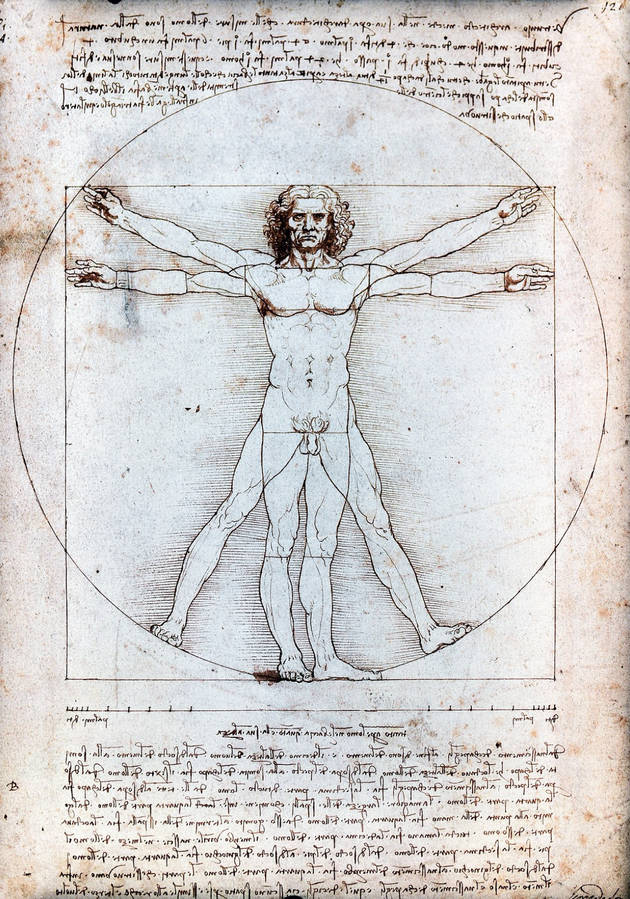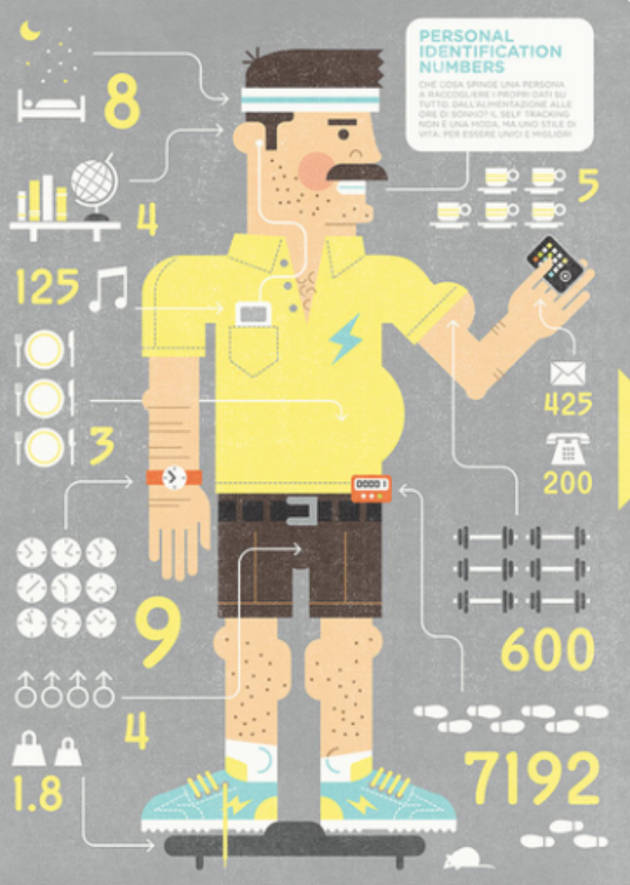The dark side of self-tracking
The role of designers isn’t solely to create a solution, especially because often there is not even a problem. One of the responsibilities of designers is, nevertheless, to question the behaviour they will trigger - or the behaviour they have created. Questioning first, then (maybe) doing. Maybe we should have been a little more critical before launching thousands of self-tracking apps that are stealing away our data, our altruism and our empathy. In this article I will question the designer’s role when it comes to behavioural design.

State of play
Our western culture is embedded in the present. The past seems forgotten, and the future appears quite bleak. Meeting immediate material or emotional needs, seeking well-being or at least an impression of well-being is the priority.
Nowadays, development is “personal”. The many books published each year in this field prove this, as well as the flourishing business of well-being apps (sociologist Deborah Lupton estimates that there are over 160.000 tracking apps available in app stores). The result is a civilisation centred on the ego, neglecting everything that focuses on other matters; we are enlarging certain aspects of the self at the expense of other topics, such as altruism or sacrifice. One of the illustrations of this disconcerting uninhibited navel-gazing is the mundane/day-to-day use of so-called Quantified Self or Self Tracking aids.
This article will solely talk about casual use of self-tracking and exclude professional use of it. Self-Tracking can be defined as the activity of measuring or documenting something about ourselves. It seems rather harmless, but behind this trend lies the big question of control — from all sides. The ever-growing Self-Quantified trend reflects the need of our “society of effort”, to show in the eyes of others, performances, power and success. This observation establishes the trends of self-tracking as the mirror of our ego of performances. It is crucial that we, designers and clients, question this trend. We can mostly agree that self-tracking empowers us, but are we aware of its dark sides and what kind of society we are designing and encouraging? How can designers turn self-tracking and self-optimisation into something positive and meaningful for society?
When and how did we get so self-centred?
Is studying ourselves such an exciting topic? Yes, undeniably. The interest in the “self'' is not new and stems from long before social media and the development of technologies. Here is the short version: the cult of the self first appeared in the Renaissance with the Humanist movement. From seeing themselves as an object (of God), men became subjects, and thus the centre of the cultural movement of Humanism. The cult of the self was then further developed during the period of Romanticism. Withdrawal and the suffering-self were some of the main themes during that time.

While the great collective struggles carried by ideologies were being exhausted, the 1970s saw the claim of “being oneself” exacerbated. At that time, the American sociologist Christopher Lasch denounced The Culture of Narcissism in his book: “The Invasion of Society by the Ego”. In Lasch’s definition (drawn from Freud), the narcissist is “driven by repressed rage and self-hatred, escapes into a grandiose self-conception, using other people as instruments of gratification even while craving their love and approval.”
With the emergence of social media, connected objects and app development, the marketing of tribes of the 80s and 90s (“we”) has been replaced by the marketing of the ego (“I”). Designers, advertisers and influencers encourage individuals to be fascinated by celebrity, to cultivate extraordinary tastes, to identify with the dominant elites (for instance by using brand ambassadors). Promoting these grandiose aspirations can lead to self-denigration or a feeling of being worthless and marks the growing grip of the self-awareness culture.
The trend of the quantified-self is a symbol of the narcissist taking gratification in a context of performance, and the staging of the self. It isn’t a surprise that in a culture where the individual is constantly examining themselves, anxious, looking for signs of failure or, on the contrary, of good health, the quantified-self cultus meets with great success. This trend is feeding itself with the fascination with fame and celebrity, the fear of competition, the difficulty of personal relationships and maybe even the horror of death.
The dark side of day-to-day self tracking
The keystone of the self-tracking trend is the idea of a better understanding of ourselves through data. Initially dedicated to sports activities, the extraction of personal data gradually spread throughout our daily lives. The most common examples of areas where self-tracking is used are health, diet and fitness. However, self-tracking can also be used for menstrual and sleep cycles, wealth and money, (paradoxically) media consumption and many more aspects of our lives.

"At the heart of the quantified-self movement is, in fact, a desire of control."
Bjitah Ajana
In his fascinating research “Quantifying the quantified self: A study on the motivations of patients to track their own health,” Henner Gimpel defined five principal reasons for people to track their lives:
- self-healing = becoming healthier;
- self-discipline = working towards a goal and get rewarded for our effort;
- self-design = controlling and optimising oneself;
- self-association = inspiring, and comparing oneself to, others;
- self-entertainment = being entertained.
We can see that the desire of being an augmented version of ourselves is the biggest driver. The appeal lies very much in the entertainment it seems to provide and the impression of control it gives to the user. However, let us take a step back and question self-tracking risks. Is the modern narcissistic quest of uniqueness and exceptionalism worth it?
Points of interest
I identified 4 points of interest: social pressure, the simplification of self-representation, the punitive aspect of self-tracking and finally, the massive issue of data protection.
1 Social pressure
No longer content with the intimate narcissism of our performance, we must now put ourselves on show. In 2020, “The narcissist is anything but closed in on himself and his desire. On the contrary, he wants us to admire and love him, and cannot do without the desire of others.” Self-quantifying himself helps him in his quest or recognition and desire to be seen.
The more we want to share, the more we want to have something to share. Personal data are ideally suited to the social life of sharing. You might not always have something to say, but you always have a number to report.
2 The simplification of self-representation
In our ultra-connected society in which everything is shared, the individual is continuously confronted with the success of others — with whom he is de facto placed in competition. This competition can be measured. The quantified self is based on the idea that only what is quantified can be improved. Which in itself is not entirely true. I could improve, for instance, my relationships with others, get involved in associations, work for a better society, or focus on intellectual development. And all of this can hardly be done through numbers, which brings us to another point of interest: the simplification of the world and its representations via a numerical model — data arrangement (dashboard) via infographics or data visualisation.
In the Data-Driven Life, numbers make problems less resonant emotionally but more tractable intellectually.
It might appear very comfortable to have a feeling of being in complete control. Still, it distracts us from subjective experience, favouring a more reassuring objective way of perceiving the body and so, the world. The body and the self become represented as an archive of identifiable, storable and processable data, numbers and values.
3 The punitive aspect of self-tracking
One of the other negative sides of using self-tracking lies in the “punitive” aspect of non-compliance with objectives: trying to get close to an ideal of perfection induces a sanction of self-condemnation if we do not manage to meet our goals. It might only be a number, but our inside voice is telling us: One gram heavier? You are fat. Skipped a day of running? You are lazy. The objectivity of a machine can be merciless and cruel as much as our interpretation of those numbers! It is an extra layer of pressure for people in a society that is already highly demanding. Studies show that people who spend a lot of time optimising themselves are more liable to experience stress than people seeking “quality of life”.
4 The massive issue of data protection
The real money, not surprisingly, is in the data collected. The Quantified Self movement mobilises the use of social media as an instrument for exposing data and flirting with our desire for recognition. It is quite astonishing to see how tracking technologies are being embraced despite their significant threat regarding data sharing and privacy matters. Device-markers have never been so intimately and parasitically involved in the shaping of our daily lives. Society urges us to measure ourselves, and we do it intentionally. Fully conscious of the data we expose. Here is my question: why? We know the danger, but still, we cannot do anything different. Whatever happened to the thing that differentiates us from animals and robots: reason?
The responsibility of the designer
I think it is essential that designers, together with their clients, question the dark sides of the Quantified-Self trend mentioned above, as well as its addictive aspects. Re-fashioning ourselves with the aid of metrics, experimenting with our bodies, optimising and improving ourselves is, undoubtedly, very appealing.
However, when it comes to design practice, it is essential to be critical toward the product, tool or service we are imagining. Often we are encouraging uniformisation of people by calling for more optimisation. By creating daily services and tools as “more” instruments (more efficient, faster, more intuitive, etc..), we think of the individual as a being who must be efficient. The individual then becomes normalised in his or her search for perfection — a measurable goal. The design and practice of self-tracking aids imposes the ideas of defining humans by their performance — where the human (semi) voluntarily associates him or herself with the notion of the machine (optimise, test, improve).
As a designer, I would instead want to work toward the “optimisation” of the collective, rather than encouraging navel-gazing and machine-like definitions of humans. I would love it if we designers could think of an alternative approach towards self-awareness based on empathy and emotions such as altruism and maybe even compassion. Well-being and life improvement could be provided by others (empathy) instead of via individualistic development. In a hyper-individualistic society, one of the next prominent issues designers will have to face will be, undoubtedly: how can we turn self-tracking and self-optimisation into something positive for the community?
As an idea, we could think of the quantified-self movement as a matter of exchange. Let say a conscious quantified-self. If you eat fewer calories than expected, you could send those calories to someone in need of food, or if you decide to count your steps, make them count for something. Personal data could be traded for people in need, could work towards a more inclusive community; our self-optimisation could benefit others. There are many more ideas to have, and it is up to us, designers, to create a scenario for a “collective optimisation”.
Another significant stake when talking about the Quantified Self is the user’s data protection. It is a very complex subject that I won’t go into here. Nevertheless, we have to be aware that we, designers, are creating an entertaining and legal way of stealing personal data, seducing the dark side of our humanity and our ego, and compromising our very own data. We need to ask ourselves: Is it ok to exploit the weakness of our humanity? And for what, or for whom, are we doing it?
Hey, I am Alexia! Among many other things, I am a designer at Fabrique